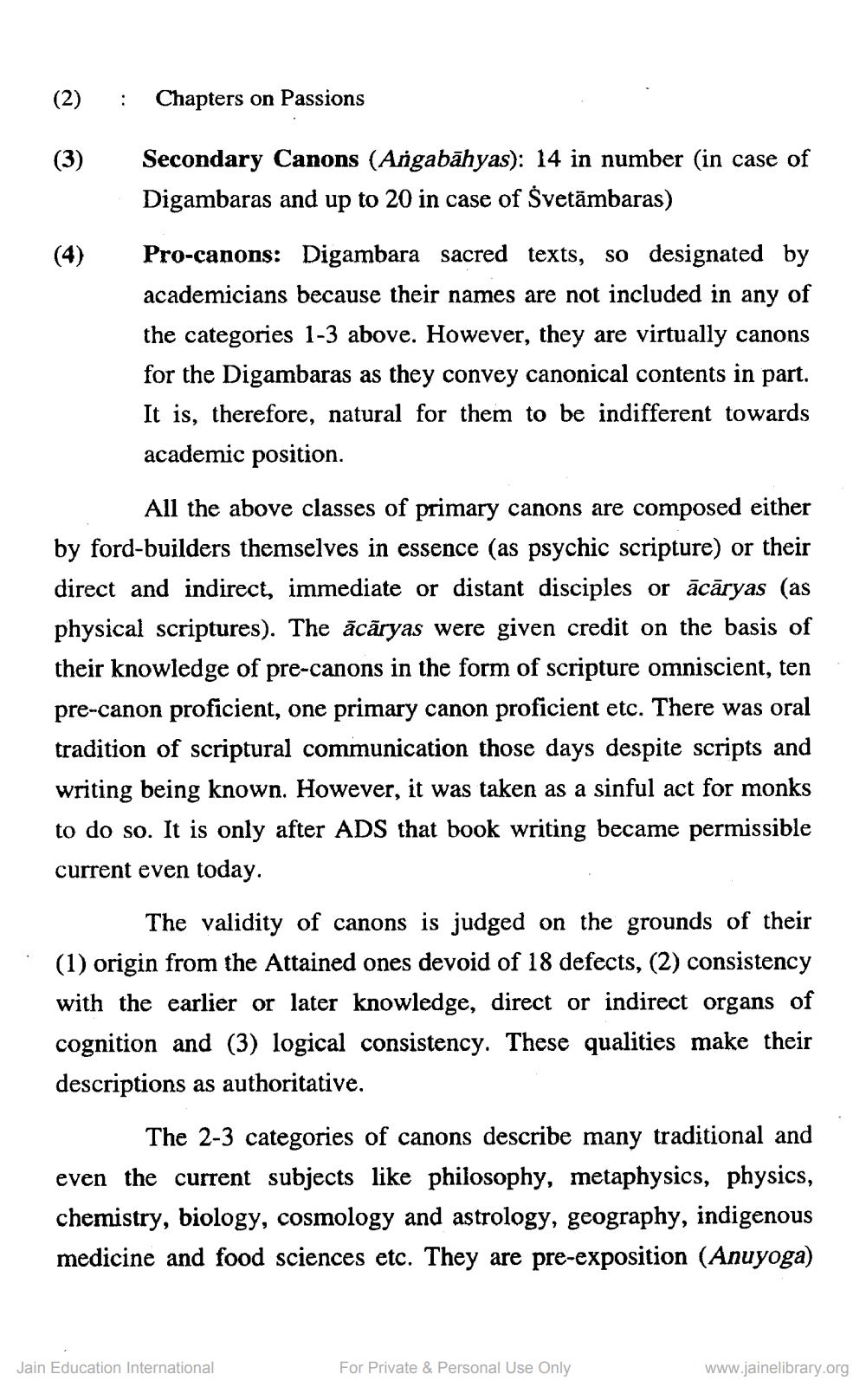________________
(2)
:
Chapters on Passions
Secondary Canons (Angabāhyas): 14 in number (in case of Digambaras and up to 20 in case of Svetāmbaras)
Pro-canons: Digambara sacred texts, so designated by academicians because their names are not included in any of the categories 1-3 above. However, they are virtually canons for the Digambaras as they convey canonical contents in part. It is, therefore, natural for them to be indifferent towards academic position.
All the above classes of primary canons are composed either by ford-builders themselves in essence (as psychic scripture) or their direct and indirect, immediate or distant disciples or ācāryas (as physical scriptures). The ācāryas were given credit on the basis of their knowledge of pre-canons in the form of scripture omniscient, ten pre-canon proficient, one primary canon proficient etc. There was oral tradition of scriptural communication those days despite scripts and writing being known. However, it was taken as a sinful act for monks to do so. It is only after ADS that book writing became permissible current even today.
The validity of canons is judged on the grounds of their (1) origin from the Attained ones devoid of 18 defects, (2) consistency with the earlier or later knowledge, direct or indirect organs of cognition and (3) logical consistency. These qualities make their descriptions as authoritative.
The 2-3 categories of canons describe many traditional and even the current subjects like philosophy, metaphysics, physics, chemistry, biology, cosmology and astrology, geography, indigenous medicine and food sciences etc. They are pre-exposition (Anuyoga)
Jain Education International
For Private & Personal Use Only
www.jainelibrary.org




